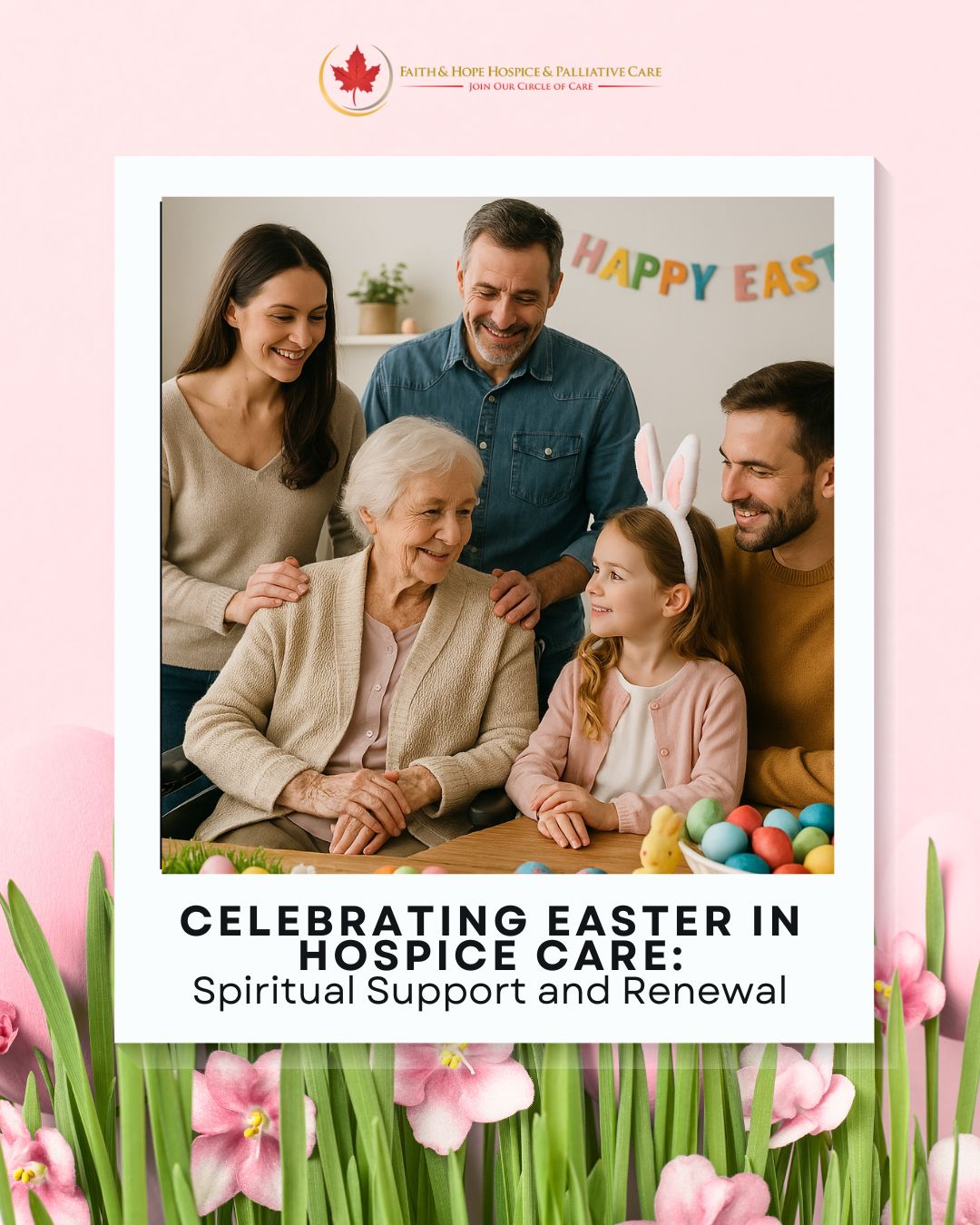
- By: administrator
- Blog
- No Comments
Easter is a time of renewal, hope, and reflection—values that resonate deeply in hospice care. For patients and their families in Los Angeles, Easter can serve as a meaningful occasion to reflect on the lives of loved ones, create lasting memories, and find comfort in spiritual themes that bring peace. At Faith and Hope Hospice, we recognize the importance of this season, offering compassionate and personalized spiritual care. Our goal is to support not just the physical care of our patients, but also their emotional, psychological, and spiritual well-being.
Spiritual Care at Easter: A Time for Reflection and Connection
During Easter, many individuals reflect on their spiritual beliefs, celebrate their faith, and connect with loved ones. For those in hospice care, this time can offer an opportunity to find peace, comfort, and strength in their faith. Faith and Hope Hospice emphasizes the importance of spiritual care during this time, ensuring that patients and their families can connect with their spiritual roots, regardless of where they are receiving care.
Spiritual Care During Easter: Our team ensures spiritual support is provided during Easter by:
- Creating a Peaceful Environment: Whether the patient is in their home, in an assisted living facility, or a skilled nursing facility, we help create a quiet and peaceful space that allows for spiritual reflection, prayer, or simply a moment of quiet contemplation. The environment we provide encourages a sense of serenity, which is especially valuable for patients during the Easter season.
- Spiritual Counseling: Our hospice chaplains are available to provide one-on-one counseling for those who want to discuss spiritual concerns, reflect on their lives, or find strength in their beliefs. These sessions help families process their emotions and offer guidance in navigating complex feelings during the end of life.
- Celebrating Traditions: We support families in celebrating their Easter traditions, whether through prayer, rituals, or sharing favorite scriptures. This could include activities such as lighting candles, reading from religious texts, or performing simple ceremonies that are meaningful to the patient and family.

Themes of Hope and Renewal
Easter is traditionally associated with renewal—both in terms of the resurrection story in Christianity and in the sense of personal rejuvenation. For hospice patients nearing the end of life, these themes provide comfort and solace. While facing illness, many hospice patients find peace in the belief that they are part of a larger spiritual narrative, one that brings hope and peace in the final stages of life.
At Faith and Hope Hospice, we help patients experience the themes of Easter—renewal, hope, and the promise of peace—by:
- Offering Hope-Focused Conversations: We encourage conversations that emphasize hope and acceptance, helping patients and their families reflect on their journey and find comfort in their faith.
- Providing Music Therapy: Music is a powerful tool that can foster peace and bring joy. Many hospice patients find solace in creating or listening to spiritual music, which enhances emotional and spiritual healing.
Family Connections During Easter
Easter is a time when families traditionally gather to celebrate and connect. For hospice patients, these family connections become even more important. It is an opportunity to cherish final moments together, share fond memories, and express love. At Faith and Hope Hospice, we support families by:
- Facilitating Family Visits: Whether the patient is at home or in an affiliated facility, we encourage family visits during Easter. We work with families to ensure that their loved one is comfortable, allowing for shared moments of joy and connection.
- Providing Bereavement Support: We understand that Easter can bring a sense of anticipatory grief for families, particularly as they prepare for the loss of their loved one. We offer grief and bereavement counseling services to help families cope with their emotions during this time.
Creating Meaningful Easter Celebrations in Hospice Care
Even if a patient is in hospice care, it’s still possible to create meaningful moments during Easter. Whether the patient is at home or in a facility, we help families make Easter special by:
Ideas for Easter Celebrations in Hospice Care:
- A Simple Easter Meal: If the patient is able, sharing a light meal with family can create an intimate and loving experience.
- Crafts and Activities: For families with children, organizing a small Easter egg hunt or crafting Easter cards can bring joy to everyone involved.
- Shared Prayer or Reflection: Gathering for prayer, reading from sacred texts, or sharing life stories can foster peace and provide comfort during this important time.
Conclusion
Easter is a time of reflection, renewal, and connection. At Faith and Hope Hospice, we honor the spiritual and emotional needs of each patient, ensuring that they experience peace, hope, and love during their end-of-life journey. We offer the support families need to make the most of this Easter with love, hope, and dignity.
For more information on how we can provide spiritual care and support during Easter, or any other time, please contact us:
Phone: (626) 869-2151
Website: Faith and Hope Hospice
Let us help you make this Easter special with love, hope, and peace.
